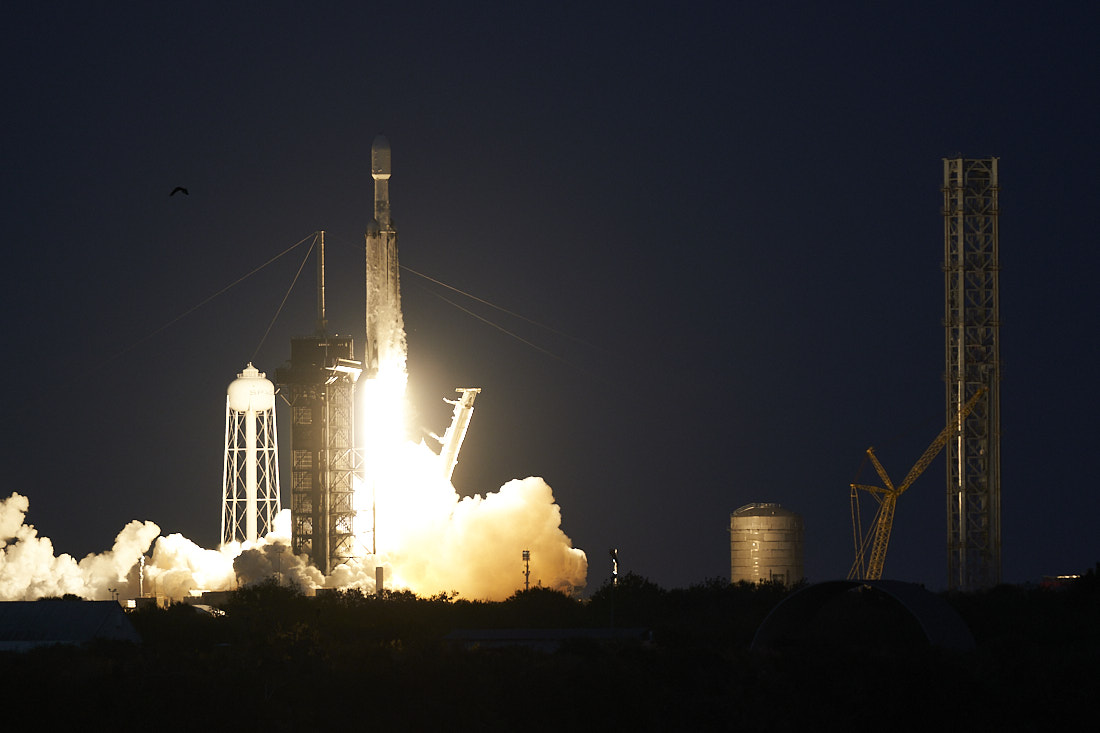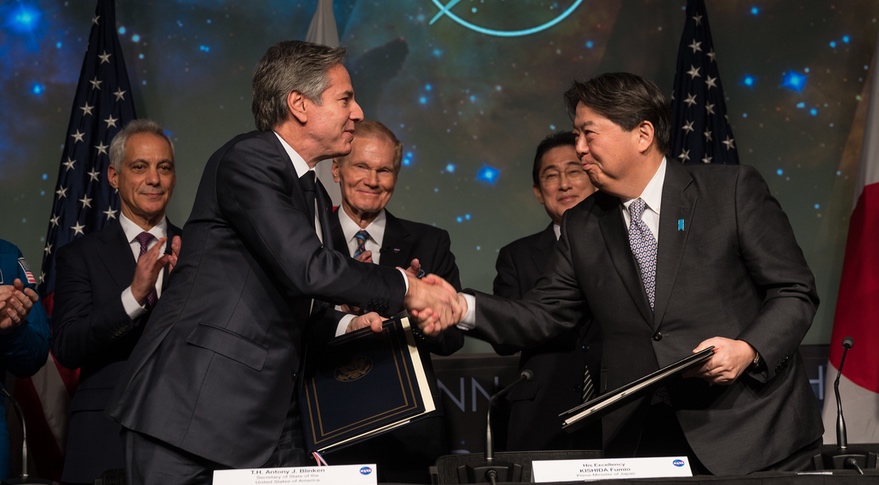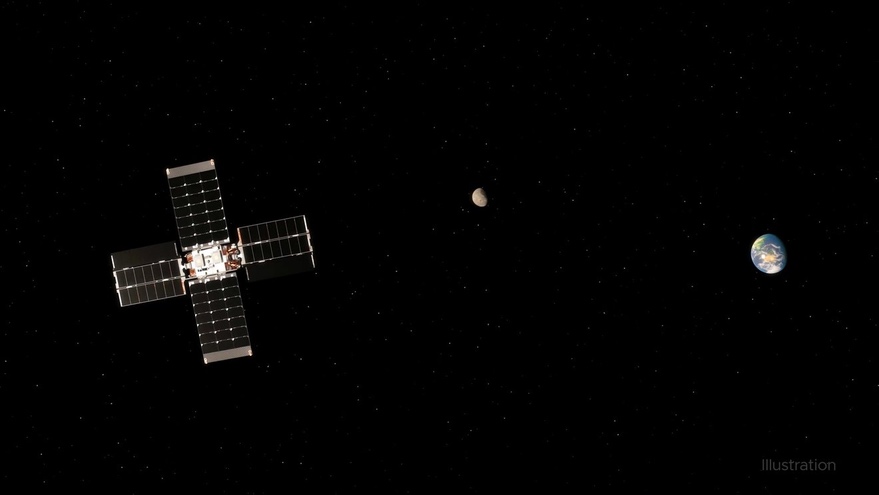SpaceX launches U.S. Space Force’s first mission of 2023 on Falcon Heavy
Original Publication Date: 2023-01-15 23:18

USSF-67 was Falcon Heavy's second national security space launch. Both side boosters landed back at SpaceX’s Landing Zones 1 and 2. The primary payload was the U.S. Space Force’s Continuous Broadcast Augmenting SATCOM (CBAS)-2.
United States and Japan sign space cooperation framework agreement
Original Publication Date: 2023-01-16 00:37

U.S., Japan sign framework agreement to enable further space exploration. Agreement covers aeronautics, space science and exploration, NASA says. Neither the U.S. Nor the Japanese governments released the text of the agreement. U.S. Secretary of State Antony Blinken: Agreement will take cooperation to new heights.
NASA studying thruster problem with lunar cubesat
Original Publication Date: 2023-01-14 22:52

Engineers are troubleshooting thruster problems on a cubesat launched last month. The Lunar Flashlight cubesat was designed to search for water ice at the moon. The spacecraft will need to start daily maneuvers in February to be able to enter orbit around the moon. If the thrusters’ performance can’t be restored, project managers are considering alternative approaches.
Analyzing intelligence in the age of ChatGPT - SpaceNews
Original Publication Date: 2023-01-14 15:00

Artificial intelligence had a huge moment in 2022. The chatbot ChatGPT gained notoriety for its ability to engage in seemingly human-like conversations. Applications in national security and space are poised to benefit from this new age of AI. For intelligence analysts trying to predict a hostile act in space or on Earth, generative AI could be game-changing.
NASASpaceFlight.com
India launches a new ocean monitoring satellite on Saturday morning. The PSLV rocket delivered the EOS-06 spacecraft into a low Earth orbit. The mission, PSLV C54, lifted off from the Satish Dhawan Space Centre at 11:56 local time (06:26 UTC)
Commercial Archives
SpaceX is preparing to carry out the first Starlink launch of 2023 with a mission that will place 51 satellites into orbit. The Group 2-4 mission, which was delayed from November, is now slated for liftoff at 8:18 AM PST Sunday (16:18 UTC)
International Archives
China has launched two more missions to orbit. First, a Chang Zheng 2C launched from the Xichang Satellite Launch Center (XSLC) on Thursday at 18:10 UTC, carrying APStar-6E. On Friday, a Chang Zheng2D was launched from the Jiuquan Satellite Launch Center (JSLC), carrying the Yaogan-37 & Shiyan-22 A/B payloads.
ISS Updates – Spaceflight101 – International Space Station

A veteran NASA spacewalker and an EVA rookie from Japan ended their week with nearly six hours of work outside the International Space Station on Friday. The restoration of the Station’s Mobile Servicing System started last year and continued in January to provide Canadarm2 with a new pair of grappling hands.
Featured – Spaceflight101

SpaceX Falcon 9 takes to the skies over Florida’s Cape Canaveral Monday afternoon. The flight-proven Dragon spacecraft will deliver science gear, supplies and maintenance hardware to the International Space Station. It is the first of at least six cargo ships inbound to the U.S. Segment of ISS this year.
News – Spaceflight101

Russia's Rockot booster set to blast off from the Plesetsk Cosmodrome at 17:57 UTC with the Sentinel-3B multi-function satellite. Sentinel-3B is Europe's next addition to the Copernicus satellite fleet. Read more at: http://www.dailymail.co.uk/satellite-news/2014/01/26/satellite-launches-with-Russian-rockot- booster.html#storylink=cpy.
Re-Entry: Long March 11 Rocket Body – Spaceflight101

The CZ-11 fourth stage used leftover propellant for a partial de-orbit maneuver, lowering its perigee to 120 Kilometers to significantly accelerate its orbital decay. It is reportedly built around a YF-50 main engine and conducts the orbital circularization after the three CZ-11 stages finish their job.
NASA’s Lunar Flashlight Team Assessing Spacecraft’s Propulsion System

Lunar Flashlight is the first interplanetary spacecraft to use a new kind of ‘green’ propellant. The SmallSat will use a new laser reflectometer built with four near-infrared lasers to shine a light into the permanently shadowed craters at the lunar South Pole. Lunar Flashlight will employ an energy-efficient near-rectilinear halo orbit.
NASA Scientists and Satellites Make Sense of Earth’s Subtle Motions

JPL scientists are mapping where the Hayward Fault is creeping to better understand how much of it is likely to slip in the next large earthquake. Creeping faults are less likely to produce large earthquakes because the motion relieves much of the stress. JPL’s Zhen Liu is using InSAR data, GPS measurements, and numerical models to study a different kind of motion in the Pacific Northwest.
NASA’s TESS Discovers Planetary System’s Second Earth-Size World

Scientists have identified an Earth-size world, called TOI 700 e, orbiting within the habitable zone of its star. The world is 95% Earth’s size and likely rocky. Astronomers previously discovered three planets in this system, called TOi 700 b, c, and d.
NASA Wants You to Help Study Planets Around Other Stars

Exoplanet Watch is a new program from NASA to help people find and study exoplanets. More than 5,000 planets have been confirmed to exist outside our solar system. Scientists estimate there could be millions more exoplanets in our home galaxy alone. Participants in the program can use their own telescopes to detect planets outside our solar system, or they can look for exoplanets in data from other telescopes.
NASA Space Missions Pinpoint Sources of CO2 Emissions on Earth

The Bełchatów Power Station in Poland is the largest lignite-fired power plant in the world. The Polish government has drafted plans to close the plant by the end of 2036. OCO-3 can serve as a “pathfinder” for next-generation satellite missions.
Watch the Latest Water Satellite Unfold Itself in Space

The Surface Water and Ocean Topography (SWOT) satellite launched into Earth orbit on Friday, Dec. 16. The solar arrays fully deployed shortly after launch, taking about 10 minutes. The mission monitors and controls the satellite using telemetry data, but it also equipped spacecraft with four customized commercial cameras.
Construction Begins on NASA’s Next-Generation Asteroid Hunter

NASA’s Near-Earth Object Surveyor recently passed a rigorous technical and programmatic review. The mission is transitioning into the final design-and-fabrication phase. The mission supports the objectives of NASA’s Planetary Defense Coordination Office (PDCO)
